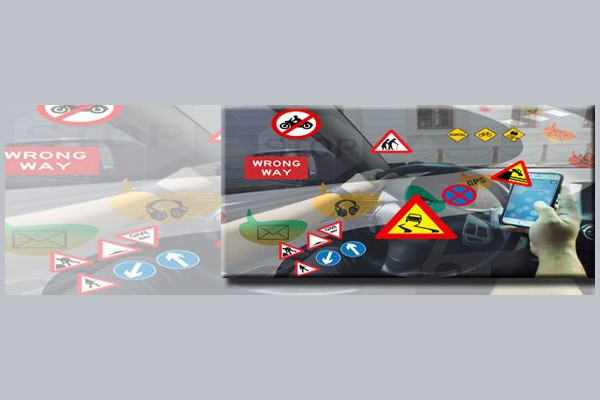Have you ever danced to Drake’s “In My Feelings” for the Kiki Challenge? If you have, you might have just broken the law.
The Department of Transportation (DOTr) issued an advisory for those who are planning to join the #kikichallenge, or those dancing to the tune of Drakes hit song “In My Feelings”. In their advisory, the DOTr reiterated that violators of the Anti-Distracted Driving Act will be charged with reckless driving, possible revocation of driver’s license and a fine of a minimum of P5,000 to a maximum of P15,000. The Anti-Distracted Driving Act prohibits the use of cellphones and smartphones while driving.
This Drake tune became viral when some celebrities, among them Will Smith, started dancing to this song while at the top of a suspension bridge in Istanbul, Turkey. Others have imitated the stunt by jumping out of moving car, leaving the door open, showing some dance moves and jumping back into the car. The inherent danger of jumping out of a moving car and jumping back in, especially for automatic transmission cars that are on Drive while the driver is dancing outside, is very likely to result in injury to the driver and damage to property, especially if the driver fails to jump back to the car before it careens out of control or go downhill.

Screengrab of the viral “Kiki Dance Challenge” video along EDSA’s southbound lane. The woman in the video has since apologized to the Metro Manila Development Authority and paid penalties for her traffic violations.
The question is, why do people do it?
One reason is peer pressure. Aside from the the older people taking the challenge as a publicity stunt, the young people who do are doing it mostly as a response to peer pressure. As digital natives, millenials tend to take these challenges to boost their likeability among their group of friends.
Those attempting the Kiki Challenge . However the dangers of the moving out of the vehicle is very real. In the video above, you will see that there are those who have been hit by other cars, dragged by their own cars, or worse, locked out of a moving vehicle. The DOTr says this is a violation of the Anti-Distracted Driving Act.
The Anti-Distracted Driving Act (ADDA) also known as Republic Act 10913 essentially prohibits distracted driving which is basically driving a vehicle while doing something else. In the Philippines, distracted driving refers mostly to the use of a smartphone while driving. Other things have not been thoroughly identified to constitute distracted driving such as
1. Eating and drinking
2. Going through your wallet or purse
3. Making adjustments to the stereo
4. Looking for items under your seat and around the cabin of a car
5. Being upset
Our ADDA specifically mentions the banning of the use mobile devices as a major cause of distracted driving.The ADDA was approved in both houses of Congress but failed to get the signature of former President Aquino. It lapsed into law and was implemented during the administration of President Duterte. There was much confusion when the law was first implemented on May 18, 2017. Information campaigns were not able to curb the confusion that came with the new law. How about those who need their smartphones for their jobs? Or those who already had DVD systems that came with the car? Or those who had dashcams?
It is interesting to note that while the ADDA specifically zeroed in on the banning of smartphone use, the exemptions that came with this law also allowed for loopholes that would allow the continued use of smartphones before the law was implemented. As if there was no ADDA at all. At the start of the ADDA implementation, the MMDA made a statement stressing that their purpose for apprehending ADDA violators is not just to slap traffic violation tickets on motorists; MMDA’s Vic Nunez was quoted as saying promoting road safety and driving discipline took precedence over apprehension.
According to the rules of the ADDA, a safety line, which is four inches under the driver’s line of sight, is an area where you can place your smartphones, or that mobile devices can be placed under the dashboard or within the safe zone. However, those who do put their mobile devices outside of the safe zone to function as navigational maps and to accept passengers have not been apprehended. Even if a smart phone is placed well within the safety zone, there is always the danger of distracted driving if the driver gives too much attention to his mobile device. I have personally experienced a minor traffic altercation as the car I was riding was bumped from behind by a driver who had been texting on his mobile device. Gratefully, we were all driving very slowly at around 15 kilometers per hour. Had we been on a faster lane, say 40 kph or 60 kph, we would have sustained serious injuries.
The latest MMARAS or Metro Manila Accident Recording and Analysis System report of 2017 confirmed that road crash injuries dropped from 20,876 in 2016 to 19,374 in 2017. Still a high number but a reduction in the number of injured people are always welcome. The MMDA attributes this reduced number to stricter implementation of existing rules such as the one-truck lane policy and motorcycle and bus lane management schemes.
Think again before doing the Kiki Challenge. You might unwittingly be violating the law.
This story, first published at www.pwdphil.com, was produced under the Bloomberg Initiative Global Road Safety Media Fellowship implemented by the World Health Organization, Department of Transportation and VERA Files.




